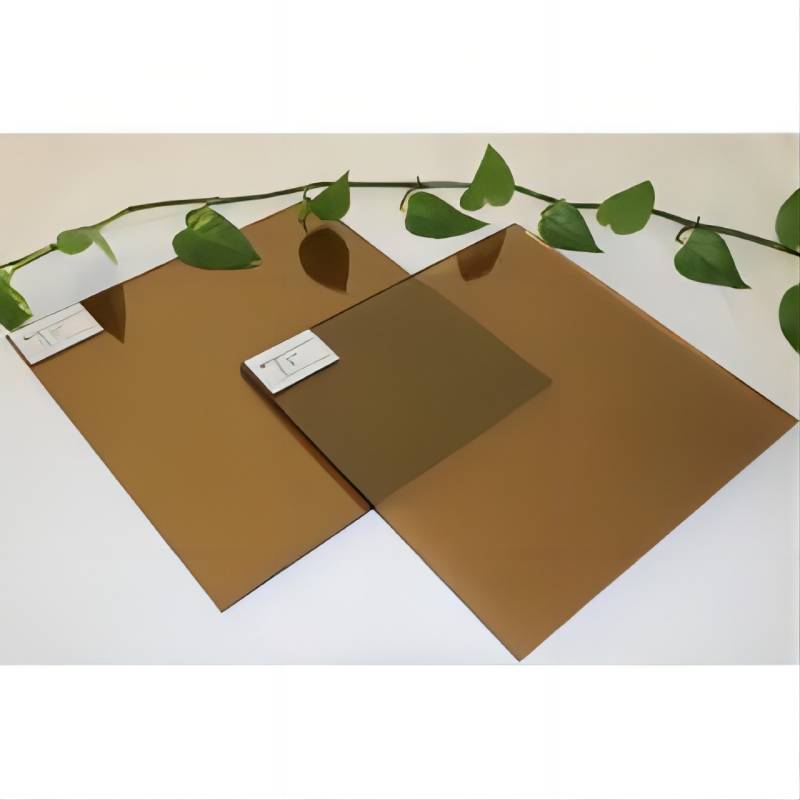Understanding the Different Types of Tempered Glass A Comprehensive Guide
Tempered glass, also known as toughened glass, is a type of safety glass that undergoes a specialized heating and cooling process to enhance its strength and durability. This makes it up to four to five times stronger than regular annealed glass, and when broken, it shatters into small, rounded fragments instead of sharp, jagged edges, reducing the risk of injury. There are several types of tempered glass, each tailored for specific applications. Let's delve into these types in detail.
1. Heat Strengthened Glass This is a halfway point between annealed glass and fully tempered glass. It undergoes a similar heating and cooling process, but to a lesser extent. It is about twice as strong as annealed glass but does not have the same safety features as fully tempered glass. It is often used where thermal stress is a concern but breakage is less critical.
2. Fully Tempered Glass As the most common type, fully tempered glass is used in various applications due to its high strength and safety features. It is ideal for windows, doors, shower enclosures, and balcony railings. When it breaks, it disintegrates into small, harmless pebbles, making it a safer choice.
3. Laminated Tempered Glass This type combines two or more layers of glass with a thin PVB (Polyvinyl Butyral) interlayer. Even if the glass is broken, the PVB layer holds the shards together, providing additional safety and security Even if the glass is broken, the PVB layer holds the shards together, providing additional safety and security

Even if the glass is broken, the PVB layer holds the shards together, providing additional safety and security Even if the glass is broken, the PVB layer holds the shards together, providing additional safety and security
 tempered glass types
tempered glass types. It is widely used in automotive windshields, skylights, and bulletproof glass.
4. Bent Tempered Glass Also known as curved tempered glass, this type is formed by heating flat glass to a soft state and then bending it into a specific shape. It is commonly found in architectural designs for curved glass walls, doors, and windows.
5. Chemically Tempered Glass Instead of heat, this type uses an ion exchange process to strengthen the glass. Sodium ions on the surface of the glass are replaced with larger potassium ions, creating a compressive stress layer that enhances strength. This method is often used for smartphone screens and other electronic devices.
6. Decorative Tempered Glass For those seeking both function and aesthetics, decorative tempered glass offers a range of patterns, colors, and textures. It can be sandblasted, printed, or tinted, making it suitable for interior design elements like kitchen backsplashes, wall panels, and furniture.
In conclusion, the variety of tempered glass types caters to diverse needs, from safety and security to design aesthetics. Each type has its unique properties and applications, making it a versatile material in architecture, automotive, and electronics industries. When selecting tempered glass, it is crucial to consider the specific requirements of the application to ensure optimal performance and safety.
 Afrikaans
Afrikaans  Albanian
Albanian  Amharic
Amharic  Arabic
Arabic  Armenian
Armenian  Azerbaijani
Azerbaijani  Basque
Basque  Belarusian
Belarusian  Bengali
Bengali  Bosnian
Bosnian  Bulgarian
Bulgarian  Catalan
Catalan  Cebuano
Cebuano  Corsican
Corsican  Croatian
Croatian  Czech
Czech  Danish
Danish  Dutch
Dutch  English
English  Esperanto
Esperanto  Estonian
Estonian  Finnish
Finnish  French
French  Frisian
Frisian  Galician
Galician  Georgian
Georgian  German
German  Greek
Greek  Gujarati
Gujarati  Haitian Creole
Haitian Creole  hausa
hausa  hawaiian
hawaiian  Hebrew
Hebrew  Hindi
Hindi  Miao
Miao  Hungarian
Hungarian  Icelandic
Icelandic  igbo
igbo  Indonesian
Indonesian  irish
irish  Italian
Italian  Japanese
Japanese  Javanese
Javanese  Kannada
Kannada  kazakh
kazakh  Khmer
Khmer  Rwandese
Rwandese  Korean
Korean  Kurdish
Kurdish  Kyrgyz
Kyrgyz  Lao
Lao  Latin
Latin  Latvian
Latvian  Lithuanian
Lithuanian  Luxembourgish
Luxembourgish  Macedonian
Macedonian  Malgashi
Malgashi  Malay
Malay  Malayalam
Malayalam  Maltese
Maltese  Maori
Maori  Marathi
Marathi  Mongolian
Mongolian  Myanmar
Myanmar  Nepali
Nepali  Norwegian
Norwegian  Norwegian
Norwegian  Occitan
Occitan  Pashto
Pashto  Persian
Persian  Polish
Polish  Portuguese
Portuguese  Punjabi
Punjabi  Romanian
Romanian  Russian
Russian  Samoan
Samoan  Scottish Gaelic
Scottish Gaelic  Serbian
Serbian  Sesotho
Sesotho  Shona
Shona  Sindhi
Sindhi  Sinhala
Sinhala  Slovak
Slovak  Slovenian
Slovenian  Somali
Somali  Spanish
Spanish  Sundanese
Sundanese  Swahili
Swahili  Swedish
Swedish  Tagalog
Tagalog  Tajik
Tajik  Tamil
Tamil  Tatar
Tatar  Telugu
Telugu  Thai
Thai  Turkish
Turkish  Turkmen
Turkmen  Ukrainian
Ukrainian  Urdu
Urdu  Uighur
Uighur  Uzbek
Uzbek  Vietnamese
Vietnamese  Welsh
Welsh  Bantu
Bantu  Yiddish
Yiddish  Yoruba
Yoruba  Zulu
Zulu 

 Even if the glass is broken, the PVB layer holds the shards together, providing additional safety and security Even if the glass is broken, the PVB layer holds the shards together, providing additional safety and security
Even if the glass is broken, the PVB layer holds the shards together, providing additional safety and security Even if the glass is broken, the PVB layer holds the shards together, providing additional safety and security